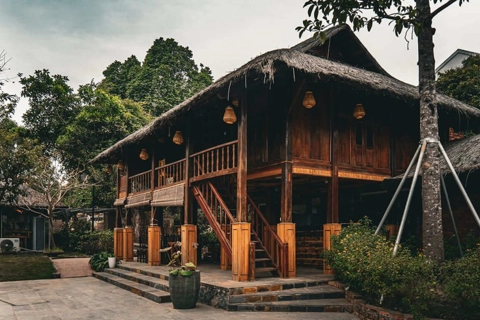Travel
Hoi An approves plan to limit visitors at Bridge pagoda
May 16, 2019 / 05:35 PM
From now on, each visit to the iconic Japanese pagoda in Hoi An ancient town will admit a maximum of 20 persons.
Hoi An has built a plan for limit on the number of visitors touring the Chua Cau, or Bridge pagoda, a symbol of Hoi An ancient town, Quang Nam province, VnExpress reported, citing the Secretary of the municipal Party Committee Kieu Cu on May 15.
According to Kieu Cu, there will be a maximum of 20 persons allowed to be on the bridge at a time to save this iconic destination from possible collapse.
“Hoi An city will arrange the visits to avoid large queue and long wait for tourists,” said Kieu Cu.
Secretary of the municipal Party Committee Kieu Cu also said that scientists and experts from Vietnam and abroad have discussed many ways to protect Bridge pagoda, but those solutions have not been approved yet.
Several experts have said dismantling and rebuilding the bridge is the best way to save it, but local authorities have yet to decide how to save the popular destination.
Bridge pagoda was built by Japanese traders in the 17th century. In 1653, a pagoda was built adjacent to the northern corridor of the bridge. Since then it has been called the Japanese bridge.
In 1990, Bridge pagoda was listed as a national cultural relic. Although it has been restored seven times, the bridge is now damaged and at risk of collapsing. In recent years, cracks in the foundations and main structure, timber girders, beams and rafters have been found and the situation continues to degrade.
Hoi An ancient town, Quang Nam province was recognized as a UNESCO world cultural heritage site in 1998 and has become one of the top holiday destinations in Vietnam. In 2018, Hoi An ancient town welcomed nearly five million visitors, including 3.7 million foreigners.

Bridge pagoda.
|
“Hoi An city will arrange the visits to avoid large queue and long wait for tourists,” said Kieu Cu.
Secretary of the municipal Party Committee Kieu Cu also said that scientists and experts from Vietnam and abroad have discussed many ways to protect Bridge pagoda, but those solutions have not been approved yet.
Several experts have said dismantling and rebuilding the bridge is the best way to save it, but local authorities have yet to decide how to save the popular destination.
Bridge pagoda was built by Japanese traders in the 17th century. In 1653, a pagoda was built adjacent to the northern corridor of the bridge. Since then it has been called the Japanese bridge.
In 1990, Bridge pagoda was listed as a national cultural relic. Although it has been restored seven times, the bridge is now damaged and at risk of collapsing. In recent years, cracks in the foundations and main structure, timber girders, beams and rafters have been found and the situation continues to degrade.
Hoi An ancient town, Quang Nam province was recognized as a UNESCO world cultural heritage site in 1998 and has become one of the top holiday destinations in Vietnam. In 2018, Hoi An ancient town welcomed nearly five million visitors, including 3.7 million foreigners.








